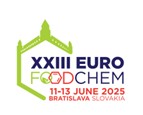Vedecký časopis - archív
Journal of Food and Nutrition Research
Súhrny čísla 1 / 2012
KOREŇOVSKÁ, M. – SUHAJ, M.
Chemometric prediction of wines affiliation with organic and conventional production systems through their elemental profiles
Journal of Food and Nutrition Research, 51, 2012, č. 1, s. 23-32
Milan Suhaj, VÚP Food Research Institute, Department of Chemistry and Food Analysis, Priemyselná 4, SK – 824 75 Bratislava, Slovakia. E-mail: suhaj@vup.sk
Súhrn: Selected elements Ag, Ba, Ca, Cd, Cu, Fe, Hg, Mg, K, Na, Pb, Rb, Sr and Zn, determined by atomic absorption spectroscopy (AAS), were used for discrimination of Slovakian organic wines, musts and grapes from conventional counterparts. Results obtained by ANOVA proved to be significantly different in Cu and Fe concentrations in all examined wine and must varieties (P ? 0.001). In organic white wines, lower contents of these elements were found compared to the conventional ones. Rb, Sr, Zn, Mg, Ca and Cd had a selective discriminative ability only in some matched wine varieties. Organic grapes contained lower levels of Ba and K compared to the conventional counterparts. Elements P, K, C, Cu and Zn significantly discriminated organic soil samples from the conventional ones. The elemental data variation facilitated multivariate differentiation of samples and their classification according to production systems. Recognition and prediction ability testing by canonical discriminant analysis performed according to wines’ affiliation to organic and conventional production resulted in 95.2% and 92.9% of correctly classified samples, respectively. Fe was found to be the most discriminating marker both by ANOVA and multivariate statistics.
Kľúčové slová: organic wine; conventional wine; element; atomic absorption spectroscopy; chemometric prediction
Na stiahnutie:
jfnr-2012-1-p023-032-korenovska.pdf (PDF, 259.72 Kb, 2112x)










